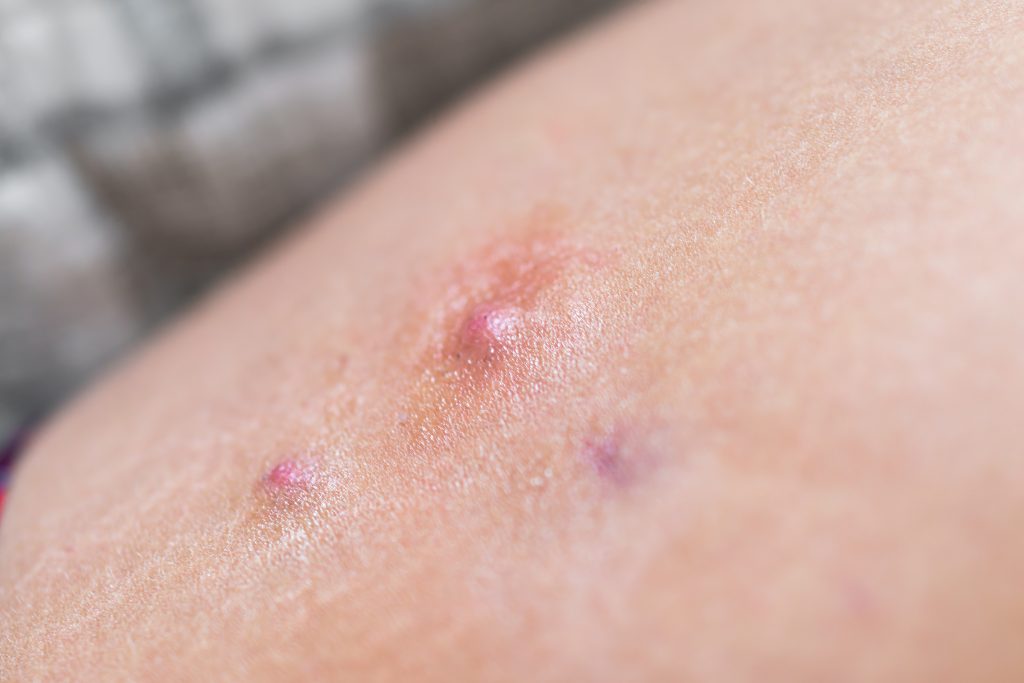Incyte’s investigational oral Janus Kinase 1 (JAK1) inhibitor povorcitinib improves itch and clears skin in adults with prurigo nodularis (PN) by week 16, according to new data presented at the American Academy of Dermatology (AAD) Annual Meeting in San Diego, CA.
“In this phase 2 trial, Povorcitinib showed a very good efficacy on itch and lesions in PN with a very rapid onset of improvement,” study author Dr. Martin Metz, Professor of Dermatology and Allergy at Charité in Berlin, Germany, tells TDD.
A selective JAK1 inhibitor, povorcitinib affects the signaling of various cytokines that are thought to be involved in the pathogenesis of PN including interleukin (IL)-4, IL-13, and IL-31 with effects on sensory nerve activation and sensitization and on fibrosis, both of which are seen in PN, he says.
This randomized, double-blind, placebo-controlled Phase 2 clinical trial evaluated the safety and efficacy of povorcitinib in adults with PN over 16 weeks, followed by a 24-week extension.
The study included 146 adults with PN who have had inadequate response or are intolerant to prior PN therapy. The primary outcome measure of the study is the proportion of participants achieving ≥ 4-point improvement in the itch Numerical Rating Scale (NRS) score over 16 weeks. The secondary outcome measures include a proportion of participants achieving Investigator’s Global Assessment Treatment Success (IGA-TS) at Week 16, the proportion of patients achieving both IGA-TS and a ≥ 4-point improvement from baseline in itch NRS score assessed up to Week 16, and number of participants experiencing treatment-emergent adverse events (TEAEs), assessed up to Week 16.
More patients who received povorcitinib across all dosing groups (36.1%, 44.4%, 54.1% for 15mg, 45mg, and 75mg, respectively) achieved the study’s primary endpoint of a ≥4-point improvement in NRS4 score than those who received placebo (8.1%) at week 16.
Median times to itch NRS4 were 58, 35, and 17 days for patients who received 15mg, 45mg, and 75mg of povorcitinib, respectively. This was not estimable for the placebo arm.
The secondary endpoints of the study were also met. At Week 16, 13.9%, 30.6%, and 48.6% of patients who received 15mg, 45mg, and 75mg of povorcitinib, respectively, achieved an IGA-TS score of 0 or 1 with a ≥2-grade improvement from baseline, versus 5.4% of patients who received placebo. Further, 8.3%, 22.2%, and 35.1% of patients who received 15, 45, and 75 mg of povorcitinib, respectively, achieved both itch NRS4 and IGA-TS at Week 16, versus 2.5% of patients who received placebo, the study showed.
Povorcitinib was generally well-tolerated, and the safety profile was consistent with previously reported data. The most common treatment-emergent adverse events (TEAEs) among patients who received povorcitinib were headache, fatigue, and nasopharyngitis. Grade ≥3 TEAEs and serious TEAEs occurred in four (3.7%) and nine (8.3%) povorcitinib-treated patients, respectively, and discontinuations due to AEs were infrequent.
Unmet Need in PN
Patients with PN are currently largely undertreated or not treated at all, Dr. Metz says. “If PN is not adequately treated, these patients suffer very much, mainly because of the relentless itching,” he says. “Patients very often have sleep impairment, develop anxiety and/or depression, and are unable to lead a normal private and professional life.”
There is room for new therapies. “With povorcitinib, in addition to other treatments, we may have the chance to get as many PN patients as possible free of symptoms,” he says. “Povorcitinib will likely present an excellent therapeutic option for patients who are in need of very rapid symptom improvement and for those who prefer an oral drug.”


